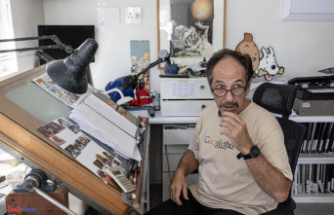The study of a fossil of a rare and ancient human ancestor may substantially change what we know about evolution. It is a pelvis of Rudapithecus hungaricus , a strange hominid-like ape that lived in the center of Europe 10 million years ago. Unearthed in 2016 of an old mine near the village of Rudabanya, in the north of Hungary, the bone suggests that the human ability to move on two legs could have origins ancestral deeper than we thought.
research on Rudapithecus seem to indicate that he was a relative of apes and human african modern, a surprise given its location in Europe. "Rudapithecus was quite similar to a monkey, and probably moved among the branches as do the apes now, holding your body upright and climbing with the arms," says Carol Ward, a professor in the Faculty of Medicine of the University of Missouri and lead author of the study, which is published in "Journal of Human Evolution". "However, it would have deferred the large modern apes to have a lower back more flexible, which would mean that when it fell to the ground, could have had the ability to stop more like humans," she explains. That is to say, it fell to the ground foot, not on four legs.
the pelvis of Rudapithecus - Carol WardTransición more directThe african apes modern have a pelvis and a long back low and short because they are very large animals, one of the reasons that normally walk on four legs when they are on the ground. Humans have back lower longer and more flexible, which allows them to stand upright and walk efficiently on two legs , a distinctive feature of human evolution.
Ward believes that if humans evolved from a body structure similar to that of an african ape, it would have required substantial changes to lengthen the low back and shortening the pelvis. If humans evolved from an ancestor most similar to Rudapithecus, this transition would have been much more direct.
the fossil was not 100% complete, during their study, the team used new techniques of 3D modeling to complete digitally your form and then compared their models with modern animals. "We were able to determine that Rudapithecus would have had a torso more flexible than the african apes of today because it was much smaller, only the size of a dog medium," says Ward. "This is significant because our finding supports the idea, suggested by other evidence that the human ancestors could not have been built as the african apes modern".
radical Changes"This fossil suggests a radical change of paradigm for understanding the origins of the hominids. Walking upright is the hallmark of our lineage, and traditionally we have asked the question 'why do we walk?' to find explanations about how and why it originated our lineage. However, this new evidence suggests that we have been asking the wrong question all the time, and instead we should ask ourselves 'why our ancestors never got to four legs?", explains the researcher.
And if we're going to get the right answers about how and why we evolve, we need to ask the right questions. And this fossil of Rudapithecus pelvis shows us what is the right question," he adds.
Ward believes that the next step will be to carry out a 3D analysis of other parts of the body fossil of Rudapithecus to obtain a more complete picture of how they moved, giving a clearer idea of the ancestors of apes and humans in africa.
Date Of Update: 19 September 2019, 23:01











